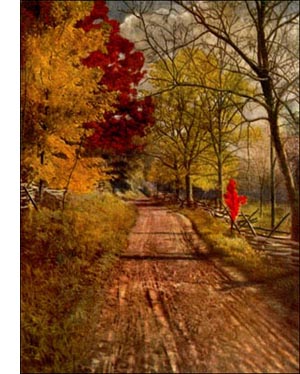Mountain Pine or Silver Pine Tree
 Mountain Pine, Silver Pine (Pinus monticola,) D. Don. is a spreading, pyramidal tree with stout trunk and slender, pendulous branches. Bark light grey and thin, becoming checked into square plates, with purplish scales and cinnamonred under bark. Wood light brown or red, soft, fine grained, easily split, weak. Buds pointed, scaly, large, hoary, clustered, terminal. Leaves 1 1/2 to 4 inches long, thick, stiff, blue-green with pale bloom. Flowers similar to those of P. Strobus. Fruit biennial, cones slender, to to i8 inches long; scales thin, broad, tipped with abrupt beak; seeds winged. Preferred habitat, sub-alpine valleys of streams. Distribution, Vancouver Island and southern British Columbia to northern Idaho and Montana, and south into California. Elevations 7,000 to 10,000 feet. Uses: Not equal to P. Strobus in cultivation. Locally used for lumber in Idaho and Montana.
Mountain Pine, Silver Pine (Pinus monticola,) D. Don. is a spreading, pyramidal tree with stout trunk and slender, pendulous branches. Bark light grey and thin, becoming checked into square plates, with purplish scales and cinnamonred under bark. Wood light brown or red, soft, fine grained, easily split, weak. Buds pointed, scaly, large, hoary, clustered, terminal. Leaves 1 1/2 to 4 inches long, thick, stiff, blue-green with pale bloom. Flowers similar to those of P. Strobus. Fruit biennial, cones slender, to to i8 inches long; scales thin, broad, tipped with abrupt beak; seeds winged. Preferred habitat, sub-alpine valleys of streams. Distribution, Vancouver Island and southern British Columbia to northern Idaho and Montana, and south into California. Elevations 7,000 to 10,000 feet. Uses: Not equal to P. Strobus in cultivation. Locally used for lumber in Idaho and Montana.The mountain white pine is the Western counterpart of P. Strobus, which it resembles in general appearance and in the qualities of its wood. Its foliage is denser and its cones nearly twice as large as those of our Eastern white pine, with a beak on each scale that the latter species lacks.
It is unusual, even in the Sierras, to find a tree of gigantic size climbing mountains. This one at the elevation of 1o,ooo feet shows specimens 6 to 8 feet in diameter and go feet high, apparently "growing nobler in form and size the colder and balder the mountains about it." The tree companions of this pine crouch at its feet; whatever they may be at lower levels, here they are dwarfs, and only the white pine keeps its noble proportions unmindful of the blasting winds and cold.
P. monticola surprises and delights the Eastern lover of noble trees, for it submits gracefully to a complete change of altitude and location. Seedlings from veteran trees in their native fastnesses are growing to-day in Eastern nurseries, and thriving on lawns in New England villages. At the Arboretum in Boston the young trees form a narrower pyramid than saplings of P. Strobus at the same age. No Western pine makes as vigorous growth in the East as this one does. A tree 12 feet high bore several cones last year. The species has long been grown in Europe.